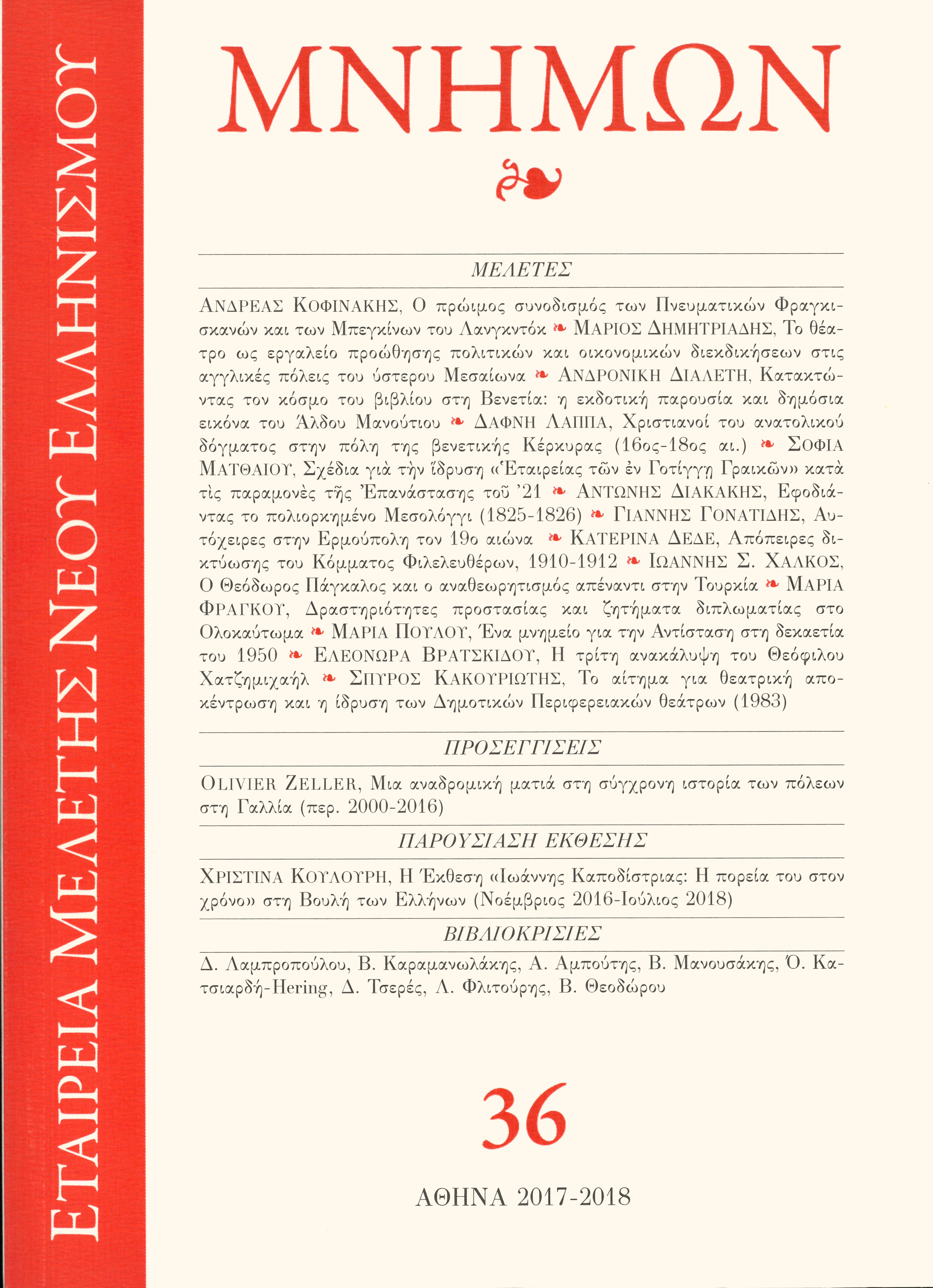A RESISTANCE MONUMENT IN THE 50s KOKKINIA’S WAR MEMORIAL BY GEORGE ZONGOLOPOULOS

Abstract
Kokkinia’s War Memorial (Kokkinia is called Nikaia today), which is George Zongolopoulos’ work, was erected in Greece in 1956 and it is a special case among the monuments of the first 15-year postwar era, concerning those who fell during World War II. This is the first, to our knowledge urban area monument made at public expense in honor of the victims of a mass occupation blockade in 1944, not just the war victims of a city in general. The fact that it was erected in the actual square of the blockade and not in any other central location of the city is also anexception.
In the case of Greece, the official management of the war memory was determined by the civil war that followed. The consequence was the exclusion of the Resistance from both, the national narrative of World War II and its monumental eulogy. Moreover, the paradoxical status of the «disciplined» democracy of the post-Civil War era resulted in several contradictions as to the distinction between legitimate and non-legitimate public practice. One of those contradictions was that the connection of a public monument of the time with the fallen Resistance fighters of a blockade was made possible thanks to the official argument that it was a war memorial. The representation, proposed by the monument of Kokkinia, differs from the other war memorials, built during the same period, with respect to the iconography, the raw material, the inscription text, the pedestal height and the style. The sculptor’s abstraction of the allegorical form of Victory from the official context and its association with the then outlawed Resistance fighters, who fell in the blockade, is particularly influential for the signification of the representation, taking into account that Victory was a national symbol for the monumental eulogy of the heroic dead. Finally, the concurrent institutional management and reception of this monument are characterized by a great contradiction. The Left municipal leadership openly linked the monument to the Resistance. Accordingly, the only art critic thoroughly dealing with the monument was a communist. The centrist and right media, as well as the corresponding art critics, were perfectly hushed across both the ideological identity of the monument and largely the monument itself, confirming with their self-censorship attitude that the monument of Kokkinia has been perceived and recognized by the Greek society as a monument in the honor of the Resistance since the decade of the 50s.
Article Details
- How to Cite
-
POULOU, M. (2024). A RESISTANCE MONUMENT IN THE 50s: KOKKINIA’S WAR MEMORIAL BY GEORGE ZONGOLOPOULOS. Mnimon, 36(36), 283–316. https://doi.org/10.12681/mnimon.36962
- Issue
- Vol. 36 (2018): Μνήμων
- Section
- ARTICLES

This work is licensed under a Creative Commons Attribution-NonCommercial-ShareAlike 4.0 International License.
The copyright for articles in this journal is retained by the author(s), with first publication rights granted to the journal. By virtue of their appearance in this open access journal, articles are free to use (with the exception of the non-granted right to make derivative works) with proper attribution for non-commercial uses (licence Creative Commons 4.0). EKT/NHRF retains the worldwide right to reproduce, display, distribute, and use articles published in Mnimon in all formats and media, either separately or as part of collective works for the full term of copyright. This includes but is not limited to the right to publish articles in an issue of the Journal, copy and distribute individual reprints of the articles, authorize reproduction of articles in their entirety in another EKT/NHRF publication, and authorize reproduction and distribution of articles or abstracts thereof by means of computerized retrieval systems.

